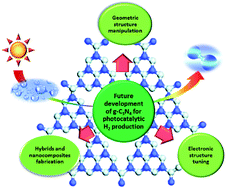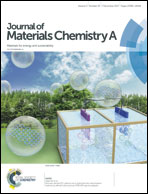Graphitic carbon nitride (g-C3N4)-based photocatalysts for solar hydrogen generation: recent advances and future development directions
Abstract
Graphitic carbon nitride (g-C3N4) is a metal-free conjugated polymer constructed from two-dimensional sheets with a bandgap energy of 2.7 eV, which makes it an applicable and efficient visible-active photocatalyst for H2 production. In the present study, the basic concepts and principles of photocatalytic water splitting have been discussed, and a guide for the selection of appropriate photocatalysts, focusing on the g-C3N4 nanomaterials, has been proposed. Our approach is mainly concentrated on evaluating two factors, namely the solar-to-hydrogen (STH) conversion and apparent quantum yield (AQY) for different photocatalysts, to provide an in-depth analysis and a framework for solar H2 production for future research directions. We compared hydrogen production from an economic viewpoint and performance of g-C3N4 nanomaterials through photochemical (PC) and photoelectrochemical (PEC) methods. Various approaches for efficient solar H2 generation over a modified g-C3N4 surface with the possibility for commercialization have been introduced. The promising approaches for the effective utilization of g-C3N4 are categorized into three proposed methods: electronic structure tuning, hybrid and nanocomposite fabrication, and finally geometric structure manipulation. Finally, we compared the recent findings and key achievements for g-C3N4-based photocatalysts modified based on the abovementioned three approaches to propose two possible scenarios for their use in the future development of efficient solar H2 generation.

- This article is part of the themed collection: Recent Review Articles


 Please wait while we load your content...
Please wait while we load your content...